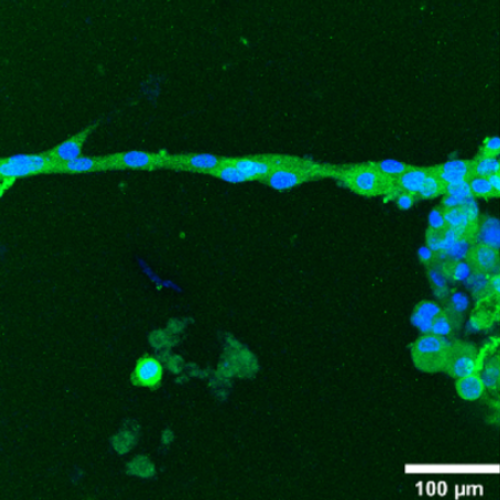Reversibly Assembled Electroconductive Hydrogel via a Host-Guest Interaction for 3D Cell Culture.
The study of cells responding to an electroconductive environment is impeded by the lack of a method, which would allow the encapsulation of cells in an extracellular matrix-like 3D electroactive matrix, and more challengingly, permit a simple mechanism to release cells for further characterization. Herein, we report a polysaccharide-based conductive hydrogel system formed via a β-cyclodextrin-adamantane host-guest interaction. Oxidative polymerization of 3,4-ethylenedioxythiophene (EDOT) in the presence of adamantyl-modified sulfated alginate (S-Alg-Ad) results in bio-electroconductive polymer PEDOT:S-Alg-Ad, which can form hydrogel with poly-β-cyclodextrin (Pβ-CD). The PEDOT:S-Alg-Ad/Pβ-CD hydrogels can be tuned on aspects of mechanical and electrical properties, exhibit self-healing feature, and are injectable. Electron microscopy suggested that the difference in stiffness and conductivity is associated with the nacre-like layered nanostructures when different sizes of PEDOT:S-Alg-Ad nanoparticles were used. Myoblast C2C12 cells were encapsulated in the conductive hydrogel and exhibited proliferation rate comparable to that in nonconductive S-Alg-Ad/Pβ-CD hydrogel. The cells could be released from the hydrogels by adding the β-CD monomer. Astonishingly, the conductive hydrogel can dramatically promote myotube-like structure formation, which is not in the non-electroconductive hydrogel. The ability to embed and release cells in an electroconductive environment will open new doors for cell culture and tissue engineering.

- ACS Appl Mater Interfaces. 2019 Feb 27;11(8):7715-7724
- 2019
- Applied Chemistry
- 30714715
- PubMed
